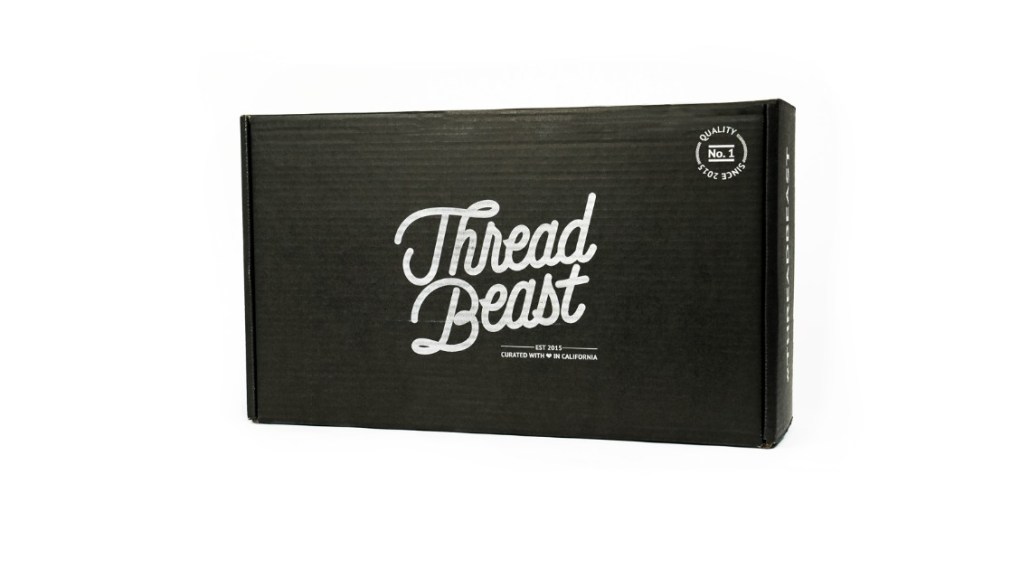Save 50% on a 3-month Digiday+ membership. Ends Dec 12.
Streetwear subscription company ThreadBeast is now spending half its media budget on Instagram

In an effort to target fashionable young men, ThreadBeast is moving its marketing dollars away from Facebook to Instagram.
“It wasn’t drastic. It wasn’t like one day we woke up and said, ‘Hey, we have to go big Instagram.’ There’s been a shift over time,” said Uday Singh, founder and CEO of the subscription box service for men’s streetwear. “I think, lately, Instagram has been the bread and butter.”
Initially, ThreadBeast spent roughly 50% of its budget on Facebook; now, it spends 25%-30% of its budget on the platform. On Instagram, however, the budget has increased from 30% three years ago to 35% two years ago to 40% last year and now 50%.
In the middle of 2018, ThreadBeast realized that its target consumers — fashionable men in their 20s — were spending more time on Instagram over Facebook where they could focus on picture and video content for fashion inspiration. “When it started becoming more obvious that this is where people are, [we said], ‘Let’s focus on how to get in front of them and use that channel,” said Singh.
ThreadBeast spends $500,000 on media each month, according to a representative for the brand. In 2018, ThreadBeast spent $48,000, up from $14,000 in 2017, per Kantar, which doesn’t track social spending, which is where the company spends the majority of its marketing dollars.
Aside from Instagram and Facebook, which account for 75%-80% of the company’s budget, ThreadBeast divides the rest of its media dollars between other digital channels — Google, YouTube, Snapchat, TikTok and Verizon Media properties like Yahoo and ESPN — and offline spending, like event sponsorships, which it allocates 10% of its budget for brand building.
“If you look at just how much time people in their 20s are spending on Instagram versus Facebook, I think a lot of that has to do with the shift of Instagram being [on top],” said Singh.
As previously reported by Digiday, brands have moved media dollars from Facebook to Instagram, specifically to Instagram Stories, where 3 million advertisers are buying media, according to Facebook’s Q2 earnings report.
“There are few places to connect with young male consumers online,” said Quynh Mai, founder and CEO of digital agency Moving Image & Content. “There’s YouTube, gaming platforms like Twitch, even Reddit, but none of those platforms give you the targeting capabilities that Facebook and Instagram have. ThreadBeast’s move away from Facebook to Instagram makes sense as brands see Facebook as a place for an older generation.”
Instagram in particular is where fashion brands find the best connection with consumers, per Mai, who added, “Instagram continues to be a really strong platform for all fashion brands because there’s still this need to be perfect and put together. Other platforms are come as you are.”
Earlier this month, Instagram kicked off a test to hide some metrics, like the number of likes a post may draw, which could prove difficult for influencer marketing, as CNBC reported. Mai believes that while this change in strategy could be difficult for brands like ThreadBeast in the short term, that it will push brands to create more engaging content and foster a deeper connection with consumers long term.
Singh also believes that as consumers want more short-form video content, that’s where Instagram succeeds. “Instagram as a platform is more focused,” said Singh. “A couple of years ago, YouTube was where people were watching. Now it’s more short-form, and that’s where Instagram has the advantage.”
More in Marketing

‘We just did the math’: The new baseline for ad tech transparency
Ad execs said the industry is shifting toward a renewed transparency push driven as much by day-to-day operational pressure as by principle.

In Graphic Detail: Here’s what the creator economy is expected to look like in 2026
Digiday has charted its expected revenue, key platforms for creator content as well as what types of creators brands want to work with.

Ulta, Best Buy and Adidas dominate AI holiday shopping mentions
The brands that are seeing the biggest boost from this shift in consumer behavior are some of the biggest retailers.







